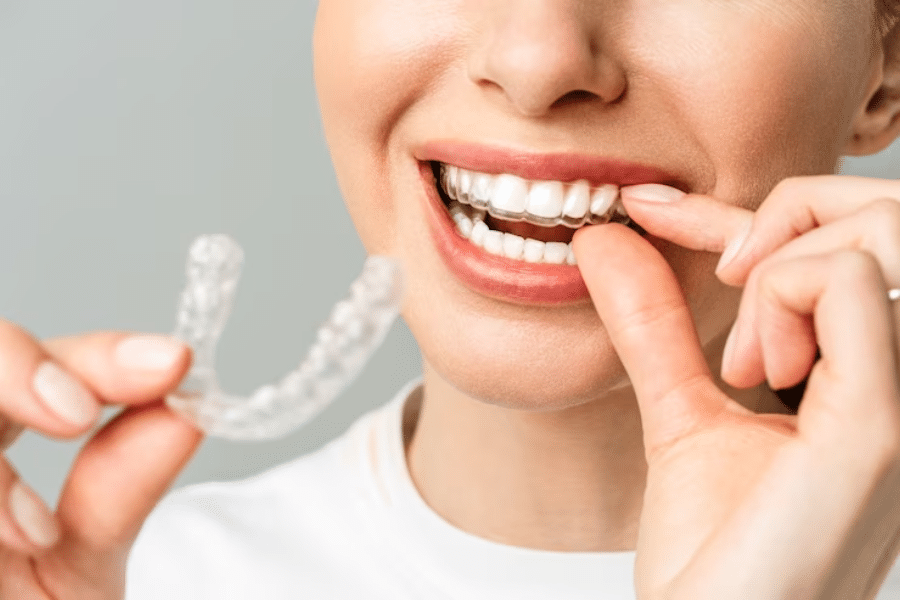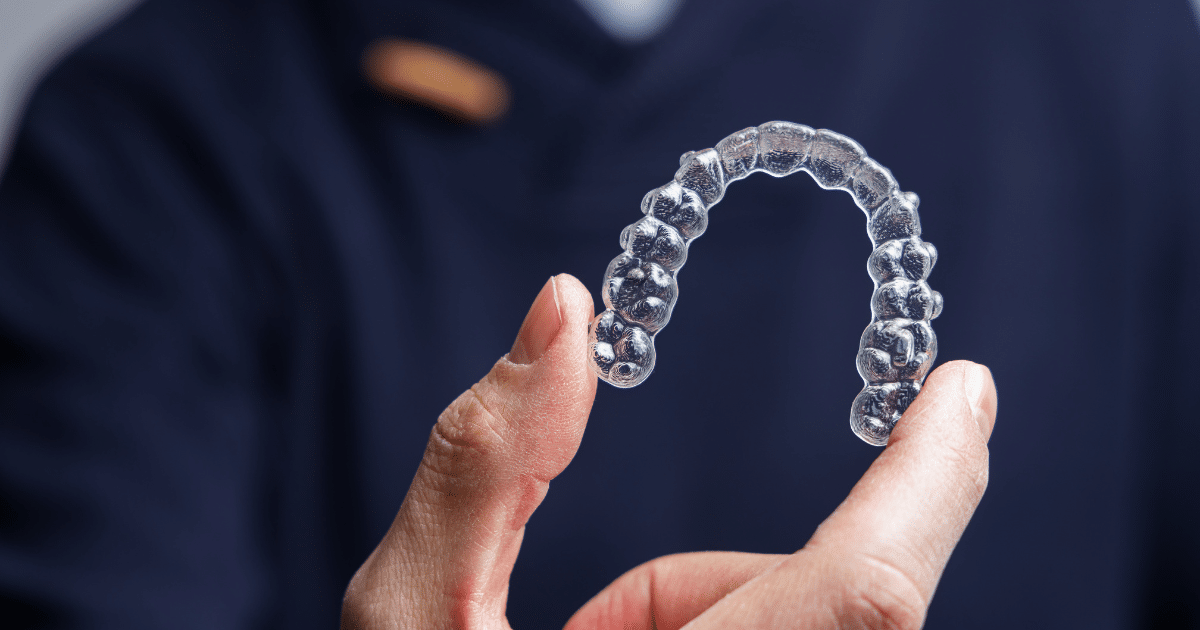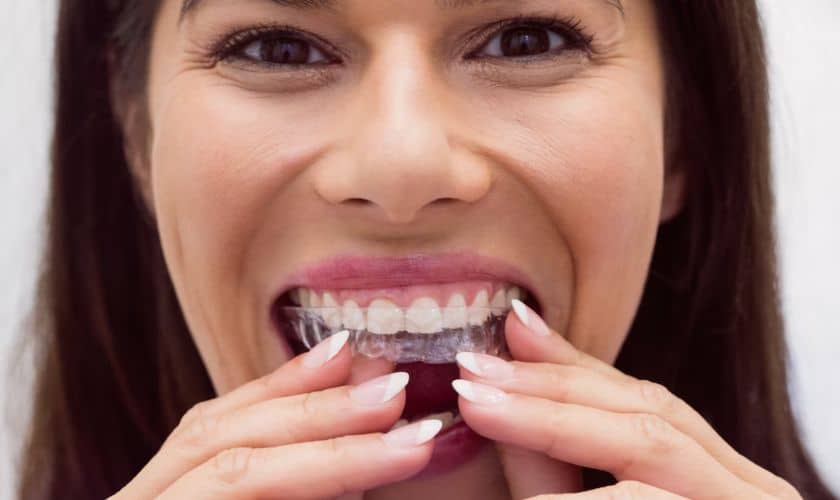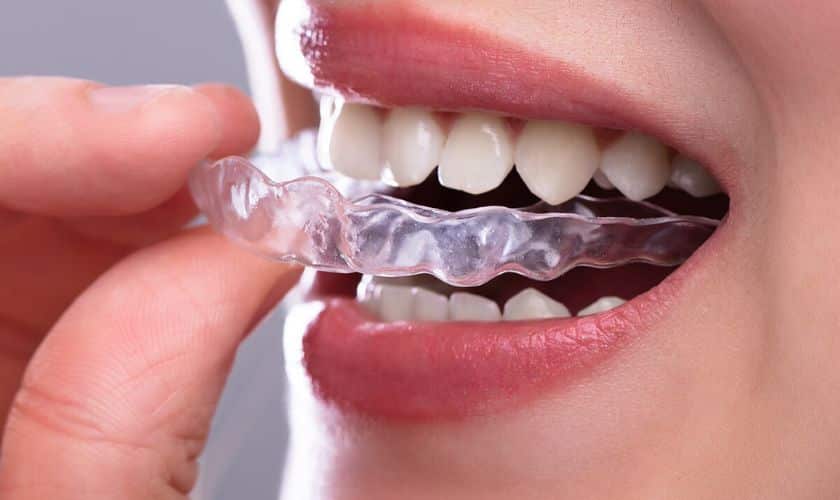
Invisalign aligners have transformed orthodontic treatment, offering a comfortable and nearly invisible alternative to traditional metal braces. However, some users experience discomfort when their aligners irritate or cut their gums. If you’re facing this issue, you’re not alone, and fortunately, there are several effective solutions to ensure a comfortable treatment experience. This comprehensive guide will delve into why this problem occurs and what you can do to address it, ensuring your journey to a perfect smile is as smooth as possible.

Understanding the Issue
Invisalign aligners are custom-made to fit your teeth, but sometimes they may have sharp edges or slightly rough surfaces that can irritate your gums. This irritation can lead to soreness, cuts, or ulcers, making the wearing experience uncomfortable and potentially hindering your treatment progress.
Why Does This Happen?
- Improper Fit: Despite being custom-made, aligners can sometimes fit improperly due to minor errors in the impressions or the manufacturing process. This improper fit can cause the edges to cut into your gums.
- Sharp Edges: Occasionally, aligners might have rough or sharp edges from the trimming process during production.
- New Aligners: Each new set of aligners requires an adjustment period, during which you might experience initial discomfort as your mouth adapts to the new shape.
Immediate Solutions
If your aligners are causing gum irritation, there are several steps you can take for immediate relief.
1. Smooth the Edges
A common and effective solution is to smooth out any rough or sharp edges on your aligners using an emery board (nail file). Here’s how you can do it:
- Remove the Aligner: Carefully take out the aligner, causing discomfort.
- Identify Problem Areas: Look for any rough or sharp edges.
- File the Edges: Use an emery board to gently smooth out the sharp areas. Be cautious and file lightly to avoid altering the aligner’s fit.
2. Apply Orthodontic Wax
Orthodontic wax can act as a buffer between your aligner and your gums. Here’s how to use it:
- Clean the Aligner: Ensure your aligner is clean and dry.
- Apply the Wax: Take a small piece of orthodontic wax and place it over the sharp or rough area of the aligner.
- Reinsert the Aligner: Carefully put the aligner back in your mouth. The wax should provide immediate relief.
3. Use Dental Silicone
Similar to orthodontic wax, dental silicone can create a protective barrier. It’s available at most pharmacies and is easy to apply.
4. Over-the-Counter Pain Relief
For significant discomfort, over-the-counter pain relievers such as ibuprofen or acetaminophen can help manage the pain until you can address the issue more permanently.
Long-Term Solutions
While immediate solutions can provide temporary relief, it’s important to address the underlying cause for long-term comfort.
1. Consult Your Orthodontist
If your aligners are consistently causing discomfort, it’s essential to consult your orthodontist. They can:
- Examine the Fit: Check if the aligners fit correctly.
- Make Adjustments: Professionally smooth the edges of your aligners or make necessary adjustments.
- Replace Defective Aligners: Order a replacement if the aligner is defective.
2. Check Your Insertion Technique
Improper insertion and removal of aligners can affect their fit and comfort. Ensure you’re following these steps:
- Insert Carefully: Place the aligners gently over your teeth and press them into place evenly.
- Remove Gently: When removing, do so slowly and gently to avoid bending or warping them.
3. Stay on Schedule
Adhering to the prescribed schedule for switching to new aligners can prevent prolonged discomfort with ill-fitting or sharp-edged aligners.
Preventive Measures
Taking preventive measures can minimize the risk of your aligners cutting your gums in the future.
1. Regular Dental Check-ups
Regular check-ups with your orthodontist ensure that any potential issues with your aligners are caught early. They can make necessary adjustments before they become problematic.
2. Proper Oral Hygiene
Maintaining good oral hygiene helps keep your gums healthy and more resilient to irritation. Brush and floss regularly, and clean your aligners as instructed.
3. Hydration
Staying hydrated helps keep your mouth tissues healthy and less prone to irritation. Drink plenty of water throughout the day.
4. Use Protective Wax
If you’re prone to gum irritation, consider applying orthodontic wax to your aligners preemptively to prevent any sharp edges from causing discomfort.
When to Seek Professional Help
While minor discomfort and adjustments can be managed at home, there are times when professional help is necessary. Contact your orthodontist if:
- Persistent Pain: You experience ongoing pain or discomfort despite trying the above solutions.
- Visible Damage: There is visible damage to your aligner that you cannot fix yourself.
- Severe Cuts or Ulcers: You develop severe cuts or ulcers in your mouth.
Personal Care Tips
To further ensure a smooth treatment experience, consider these personal care tips:
1. Monitor Your Progress
Keep track of any discomfort or issues you face with each new set of aligners. This information can be valuable for your orthodontist when making necessary adjustments.
2. Be Patient
Remember that some discomfort is normal, especially when starting a new set of aligners. Give your mouth a few days to adjust before seeking major changes.
3. Practice Good Oral Hygiene
Maintaining excellent oral hygiene is crucial. Brush and floss regularly, and clean your aligners as per your orthodontist’s instructions to prevent plaque buildup and additional irritation.
4. Use Mouth Rinse
Using a mouth rinse can help soothe irritated gums and keep your mouth clean. Opt for a gentle, alcohol-free mouthwash to avoid further irritation.
Invisalign aligners offer a convenient and discreet way to straighten teeth, but they can sometimes cause discomfort by cutting into the gums. Fortunately, there are several effective strategies to manage and prevent this issue. By smoothing rough edges, using orthodontic wax, and consulting your orthodontist when necessary, you can ensure a comfortable treatment experience. Maintaining good oral hygiene and staying on schedule with your aligners will also contribute to a smooth and successful orthodontic journey.
If you’re experiencing discomfort with your aligners, don’t hesitate to take action. Addressing the issue promptly will help you continue your treatment comfortably and achieve the best possible results for your smile. Your orthodontist is there to support you, so never hesitate to reach out for professional advice and assistance.


